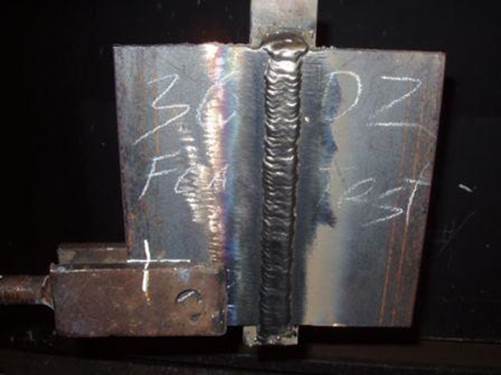What is Welding Performance Qualification (WPQ)?
This article talks about welding performance qualification (WPQ) based on requirements of ASME Code Section IX. The WPQ record indicates the ability of the welder or welding operator to deposit sound weld metal.
Each manufacturer or contractor shall maintain a record of the result obtained in welding procedure and welder/operator performance qualifications. As minimum any welding performance qualification record should indicate the essential variables, the range of qualified variables such as material, pipe diameter, thickness, position etc. The record also should indicate the result of mechanical or nondestructive testing result
The ASME Section IX Training Course is 2 days video training course and available online and the student that successfully pass the exam, receive I4I academy certificate with 16 hours training credit.

The WPQ can be qualified by either radiography or ultrasonic testing; alternatively it can also be qualified by mechanical testing. The required number of testing is different from PQR and is less stringent. The WPQ can be qualified by one face bent test and one root bend test. The bend test actually checks the ductility of the weld metal which is important factor in the depositing sound weld metal.
I have seen folks confusing between WPS and WPQ requirements like the position which normally is not essential variable in WPS but it is essential variable in the WPQ. The other confusion happens in the qualified thickness range, backing and pipe diameter etc.
The list of essential variable for WPQ has been provided in the ASME Code Section IX QW-352 thru QW-357. You will find a separate table for each welding process.
Welding Performance Qualification Requirements in the ASME Code Section IX
Essential Variable
Backing: Removing the backing is an essential variable; it means if your welder qualified with a test coupon with butt welding and subsequent back welding cannot weld a job without back welding (he can only do welding when there is backing on it)
Pipe Diameter: The limitation for pipe diameter addressed in QW-452.3. The welder who qualified in 6 inch pipe cannot weld a 2 inch pipe. He can weld till 2 ½ and not less than that. Other example that is that when a welder is qualified by 1 ½ inch pipe, can weld min 1 inch and max 2 ½ inch.
P number: The limitation for P number addressed in QW- 423, for example a welder who has been qualified in base material with P number1 thru P number 15 F can weld anything in between. This might be a little confusing because it says if a welder qualified in carbon steel with P number 1 can weld a stainless steel material with P number 8 which we know this is not possible. The point is that when you reviewing the essential variable you should consider them cumulatively. Based the P number variable he can weld but based on F number variable he cannot weld. So make sure you are considering all essential variables and each of these variables have veto power.
F number: The F number variable requirement has been addressed in the QW- 433. For example if a welder qualified with SMAW process with E 7018 for carbon steel material cannot weld with the E-308 Electrode in same SMAW process. The F number for E-7018 is 4 and for E-308 is 5 and 4 cannot cover 5 based on the QW-433 requirements.
t weld deposit: Any welder qualified in plate or pipe above ½
inch with minimum 3 layer can weld unlimited. This is different from PQR and
most people confusing between these two.
Position: The welding position is one of important essential variable in welding performance qualification. The requirement addressed in QW-461.9. Normally a welder who qualified in 6G position can weld all positions, or alternatively if he qualified in one 2G and one 5G can weld every other position.
Please note the essential variable is different from one process to other process.
Free newsletter!
Sign up to receive my monthly newsletter covering all the latest courses and updates.




New! Comments
Have your say about what you just read! Leave me a comment in the box below.